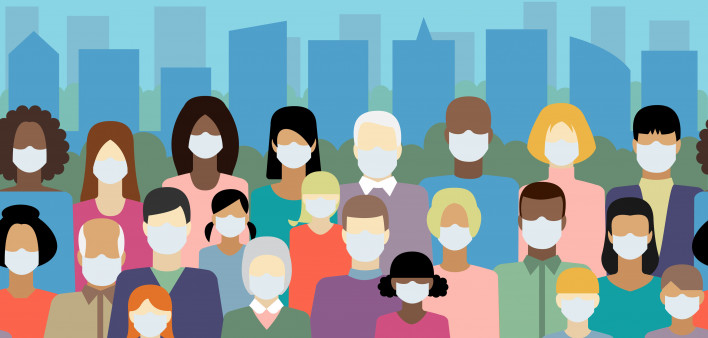March 17, 2020, was the beginning of the shelter-in-place order in the San Francisco Bay Area, the first region in the United States to impose extensive restrictions to curb the spread of COVID-19.
The first cases of pneumonia caused by the new coronavirus, which would later be named SARS-CoV-2, emerged in China as early as November 2019. The World Health Organization announced a cluster of cases in early January, and declared that COVID-19 was a global pandemic on March 11, 2020.
???? BREAKING ????
— World Health Organization (WHO) (@WHO) March 11, 2020
"We have therefore made the assessment that #COVID19 can be characterized as a pandemic"-@DrTedros #coronavirus pic.twitter.com/JqdsM2051A
On January 21, the Centers for Disease Control and Prevention (CDC) announced the first case of COVID-19 in the United States—a Seattle man who had recently returned from Wuhan, China. By late February, Washington State had reported the first U.S. death from COVID-19, the first evidence of community transmission, the first health care worker to become infected and the first nursing home outbreak.
Health and Human Services Secretary Alex Azar declared a national public health emergency on January 31. In late February, the CDC’s Nancy Messonier said that disruption to everyday life might be severe. By early March, states across the country had reported their first cases—even as President Donald Trump asserted that the virus was “very much under control.”
On March 16, as U.S. cases exceeded 3,000, Trump urged Americans to avoid gatherings of more than 10 people and to limit travel. The same day, officials in San Francisco and five surrounding counties issued a mandatory shelter-in-place order that closed nonessential businesses and directed residents to stay home. California followed with a statewide order two days later; New York State did the same on March 20.
One year ago today:
— COVID, One Year Ago (@covidoneyearago) March 17, 2021
The San Francisco area becomes the first in the US to lock down, prohibiting residents from leaving their homes except for basic needs, as national guidelines suggest limiting gatherings to 10 people and avoiding non-essential travel and public places. https://t.co/6RnMdzQ9GI
(For more COVID-19 milestones in the U.S. and worldwide, see this timeline put together by Make Medicines Affordable.)
A year later, the U.S. has authorized three effective COVID-19 vaccines—from Pfizer-BioNTech, Moderna and Johnson & Johnson—and more that 73 million Americans have received their first dose, according to the CDC’s vaccine tracker.
New cases of coronavirus infection and COVID-19 hospitalizations and deaths have dropped dramatically in the U.S., following a surge in the late fall that resulted in the deaths of more than 500,000 Americans—disproportionately people of color. Worldwide, deaths exceed 2.6 million, almost certainly an undercount.
Experts attribute the decline in the U.S. to a combination of immunity thanks to vaccination, immunity due to natural infection and changes in behavior. Cities and states have now begun to partially or fully lift restrictions, and the CDC has issued recommendations about what people can do after they’re vaccinated.
“The combination of prior infection, vaccinating aggressively, the fact we are entering into warmer months is enough to overwhelm B117,” says @ScottGottliebMD. “We are going to see declines around the country.” pic.twitter.com/VHYege2mXu
— Squawk Box (@SquawkCNBC) March 17, 2021
But we’re not out of the woods yet as more transmissible coronavirus variants are circulating widely. While vaccination may keep pace with the variants in the U.S., Europe appears to be in trouble as cases surge and hospitals again reach capacity.
As AIDS demonstrated two decades ago, a global pandemic cannot be defeated in one country alone. Even as the death toll remains high, it could be years before most people in low- and middle-income countries are vaccinated. And as long as people anywhere in the world remain susceptible, new variants that may be more deadly or more resistant to the current vaccines can continue to emerge. With this in mind, public health and legal experts and community advocates from around the world have issued a Call for Global Vaccine Equity.
Sign the Global #COVID19 Vaccine Equity Statement. https://t.co/XtGbhyG6we pic.twitter.com/q92yhzhcvi
— Gregg Gonsalves (@gregggonsalves) March 10, 2021
“One year into the COVID-19 pandemic, after over 100 million cases and 2.5 million deaths globally, we could lift the strain on our communities, health systems and economies by prioritizing truly global immunity to control the pandemic,” the statement reads. “We call on global leaders to share vaccine knowledge and expand global capacity for vaccine production. We must use vaccines this year to control epidemics around the world, not just in a few high-income countries.”
Click here for more news about COVID-19 vaccines.







Comments
Comments